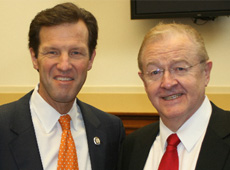Bonfires are vehicles of hatred and intolerance, not “culture”
Posted By: July 18, 2017
Leona O’Neill. Irish News.Belfast.Tuesday, July 18, 2017
Tricolours and election posters on an Eleventh Night pyre before being burned last week
SO WE’VE another Twelfth in the bag and it wasn’t as bad as previous ones. There was no rioting and angry confrontations in the city center. There were protests, no standoffs, and promises that people will stay until they are allowed down roads.
According to the news, it all passed off peacefully, which is great. Only in Northern Ireland do we celebrate when the place doesn’t go mad and burn down.
But what wasn’t so great was the vitriol displayed in all shapes and sizes on the Eleventh Night bonfires all over the north. The faces of our political representatives smiled down from many a monstrous pyre, there were racist slogans, sectarian banners, and the flag many of us hold dear was planted atop these wooden wedding-cake-esque structures like some twisted manner of celebratory candles.
Then there were the sick effigies. The picture on a makeshift coffin of Martin McGuinness, dead, not four months, for his wife, his children, and his grandchildren to see.
There were acts of a sick and heartless nature evident across the north that many years ago would have stayed within the closed confines of the bonfire, seen only by the few in attendance. But in the modern age of social media, they were shared far and wide with as many people liking them as feeling repulsed by them.
The sentiments expressed last week will be reciprocated by the nationalist side come August, no doubt. There will be Union Jacks burned, poppy wreaths, election posters and I’m sure flags for fallen soldiers in the Somme set alight, all of which were burned last year.
The frightening thing about the bonfires and the hatred that inevitably comes with them is that they are constructed by children and teenagers in our communities. Young boys gather the wood, guard the wood, construct the pyres and decorate them like their fathers did as boys and their fathers before them.
They’ll tell you romantic stories of how past generations stayed up all night to guard their creations, or how they went to the next district and stole their wood in some daring midnight raid. If you ask them if they think it might be sectarian to be burning images of people or their neighbor’s flag they’ll say no, it’s their culture.
Because of my job I’ve attended bonfires on both sides of the divide here. Both sides hold a ‘children’s bonfire’ which is lit earlier for very young children who can’t stay up late to see the big finale. This kiddies version of the pyre will have the flags of our neighbors on it also and kids will gather around clapping and cheering as it and the flags go up in flames.
Every summer we do this. For two weeks in the year we set all the work we do to come together and make this place we call home a little better for future generations on fire and we stand clapping as it burns.
Then as the last embers die, we look around at the mess we have created, the hate that has been stoked up, and try to get back to our “normal,” trying to ignore the scars on the tarmac and in our society.
Bonfires may well have been the culture of generations past. But I doubt the fires of our forefathers bore the images of opposing politicians, the symbols, and flags of our neighbors and hate-filled and hurtful slogans. The monstrous fires of our modern times have engulfed and destroyed anything resembling culture and instead, they are a vehicle to deliver our children a diet of hatred and intolerance.
I certainly don’t have the answers to the hugely complex bonfire question. But I’m guessing the answer is not to try to ignore it until next year and hope for the best. The answer is not that it doesn’t happen on my doorstep so therefore I don’t care. It’s everyone’s problem and as long as we have this level of hatred burning so ferociously in our cities in the summer months we’ll never be a “normal” society. What a wonderful gift that is to keep handing our children.










